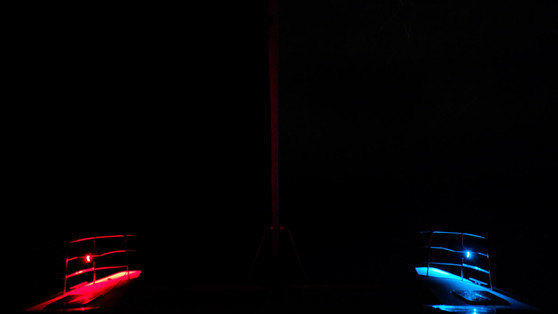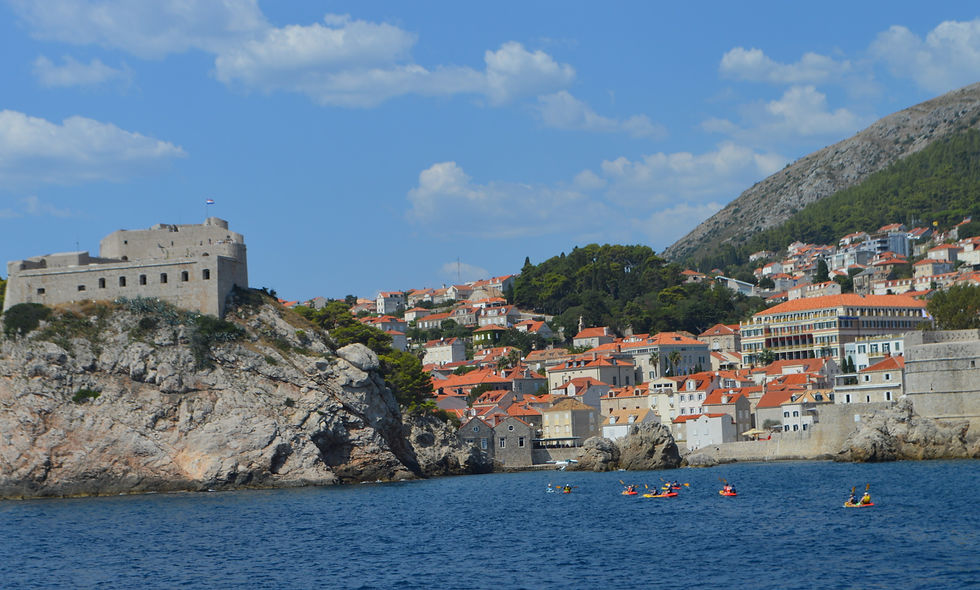Sailing 102: Anchoring, Docking and "All-Nighter" Sailing
- Christine
- Feb 16, 2022
- 4 min read
Pre-Arrival Preparations
As we approach our destination, we always start our engines (if they aren’t already on) before taking down our sails and store all our halyards, sheets and reefing lines neatly.

Searching for a anchorage in Admiralty Bay on the island of Bequia (The Grenadines)
ANCHORING
If anchoring, the skipper motors slowly around the anchorage for the most ideal spot to anchor for the day/night.
An ideal spot has the following characteristics:
Has a sandy bottom and no large rocks
5-10m deep according to our depth meter
Near a shore/beach that is swimmable or a marina with tender parking
Offers protection from the prevailing and forecasted winds during our stay
Protects from uncomfortable sea swells
Provides enough clearance for the boat to swing around with the wind
Does not block harbor entrance or channel
Not in sea grass, which is protected in parts of Europe (there’s actually an app that shows you where the sea grass is relative to your boat) or on coral.
While searching for the perfect anchoring spot, a crew member prepares the anchor for release by removing the shackle securing the bridal to the anchor chain.
When the ideal spot is found, the skipper signals the crew member on the bow to drop the anchor using the remote control to operate the windlass.
Typically, we allow a 7:1 ratio of anchor chain to depth of water. The skipper at the flybridge monitors the chain depth counter and signals the crew to stop releasing anchor chain when the appropriate chain length has been reached.
We then allow the boat to drift with neutral engines or a small amount of reversing movement until we notice the chain tugs, indicating the anchor has secured itself to the sea bed.
A crew member then secures the bridal to the anchor chain to take the pressure of the anchor rode off of the boat and drops several more meters of chain until the bridal has taken the bulk of the pressure.
If satisfied after a few minutes of monitoring whether the boat is moving or dragging chain, we turn off both engines, take a picture of our position on our chart and set the anchor alarm.
Then it is time to celebrate our new location with food and drinks, swimming, paddle boarding, games, a shower, etc.

Helios docked at Puerto Deportivo Alcaidesa (marina) in Lisbon, Portugal
DOCKING IN A MARINA
Skipper hails the marina by radio to receive instructions on check-in procedures.
Crew pulls out all fenders and docking lines from the bow lockers and ties the fenders on both sides of the boat and the stern (subject to berth configuration)
Usually, we need to pull into a reception dock first to turn in a lot of paperwork and passports before being assigned a berth.
Typically, there are dock hands to meet us at our berth to help secure docking lines that our crew tosses to them. Many times our crew needs to adjust the fenders quickly to accommodate for the varying heights of piers from one marina to another.
After we are secured, we turn off our engines and breath a sigh of relief that we are safe and sound.
We then secure our gang plank to the dock and then connect to the marina’s electrical and water before celebrating our arrival with food and drinks.
The beauty of docking at a marina is the freedom to walk off the boat and explore the town. It’s always a delight to try the local cuisine and make our obligatory gelato stop. Megan and I enjoy exploring all of the local shops and boutiques.

Our anchor monitor illustrating the path our boat traveled one night around our anchor....Helios had a pretty wild ride with heavy winds and swells while we were snoozing (Captain Dale probably lost a little sleep!)
Sailing at night demands alertness, vigilance and a keen sense of sight and hearing
OVERNIGHT PASSAGES
Sometimes it is necessary to sail overnight if we are traveling long distance and there is no land between our starting point and destination. (I.e. took us 5 days to get from Gibraltar to the Canary Islands)
This option is also exercised if we absolutely need to be somewhere by a certain date and we can’t make it just by sailing during the day.
All crew members take a shift during the night. The length of shift depends on how many crew we have on board. With just 3 of us, we normally do 4-hour shifts, so a typical schedule will be 9-1am, 1-4am, 4-8am. After the last shift, we keep things pretty loose, depending on who is up, but there is always some one at the helm.
During a night shift, we all wear life vests equipped with a water activated GPS tracker (which also sends an alert to other boats), flashing light, protective hood, etc. should one of us fall in the water.
If we anticipate rough waters, we are harnessed to jack lines on deck.
We also wear head lamps with red lights so we can maintain our night vision but also have a spotlight as well if we really need to see something long distance.
Since it is often damp at night, we normally don our rain pants and jackets to stay warm and dry.
Usually, the winds tend to die down at night and sailing can be very calm, such that you can read a book under all the stars. Megan likes to pop a bag of popcorn to snack on during her shift.
.png)











Comments